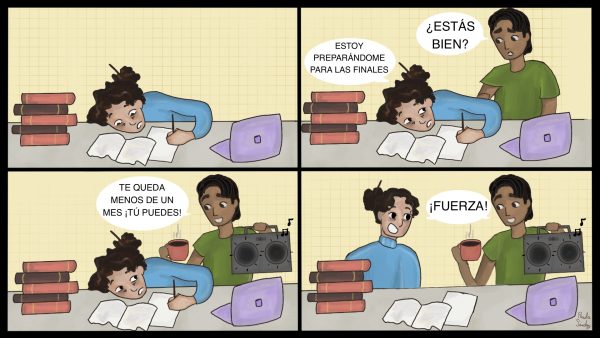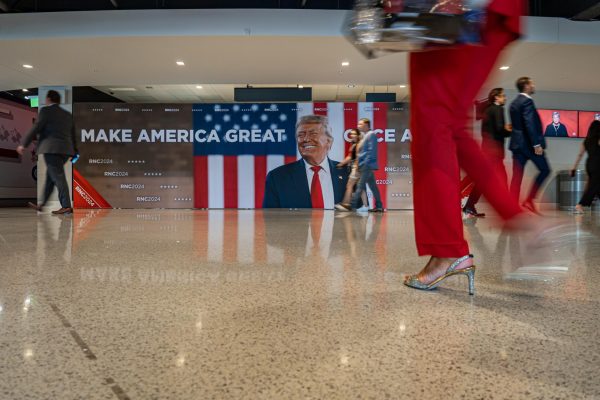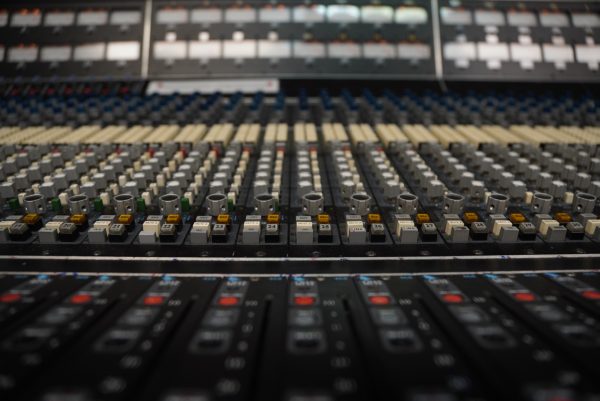Artist Philip Hartigan takes imagination vacation via ‘Lucerne Project’
October 16, 2011
Artist Philip Hartigan takes travel to a new level with his latest exhibition, “The Lucerne Project,” through damaged photos of people he’s never met and places he’s never seen.
Hartigan, who is also an adjunct faculty member in the Fiction Writing Department, began his vicarious journey by finding publicly available photos of people vacationing in Lucerne, Switzerland. Images of people standing in front of statues or walking the cobbled-stone streets of the gorgeous mountain town sparked Hartigan to document these adventures and essentially make them his own.
He first became interested in Lucerne while traversing the Internet in search of inspiration. He came across photos of the vacation hot spot and found that Lucerne and Chicago were, in fact, sister cities.
“I started by Xeroxing the photos and making them larger and larger until the lines of the picture [broke] down and details emerged that I haven’t seen before,” Hartigan said. “There is the story of the process of making the photo, and there is the story that emerges from the final product.”
Using lithographic print and layering, Hartigan transforms ordinary images of the sleepy town to that of wonder and imagination through the connection of monuments, breathtaking scenery and eccentric people.
After that process, Hartigan begins “over printing,” which is meshing together details from photos to form a completely different scene. He then incorporates his own drawings and adds another layer to the picture. Each page contains three to five different prints, all in various colors.
Inspired by the backstory of his concoction of photos and imagery, Hartigan began writing fictional narrative to go along with each piece.
“There’s a constantly shifting story in each photo that perhaps is not quite clear, but the idea emerges when you juxtapose different places and people in one photo,” Hartigan said. “The writing took a life of its own. It became an imaginary travel diary.”
Julia Borcherts, a faculty member of the Fiction Writing Department, said she hopes Hartigan’s work can be an example to other artists of how they can combine disciplines to create a multi-layered story.
“It’s an amazing way to tell a story,” Borcherts said. “There are many layers to the visual component alone, but he also adds text and sound, all of which creates a mysterious world that the viewer can’t wait to step into.”
While Borcherts found all of the images Hartigan created compelling, she said her favorite piece involved the image of a man wrapping his arms around a woman’s shoulder with a “sinister” looking building in the background. She said the combination of the oppressive elements and smiling couple created a slew of potential story ideas.
“Just because Philip is primarily a visual artist doesn’t mean that the text is secondary,” Borcherts said. “His narratives are alternately dramatic, sexy, funny and spooky.”
Hartigan also incorporated the use of QR tags to bring his exhibit to another level. By scanning the tag with a smart phone, the guest can listen to Hartigan read his text in his own voice, which Borcherts mentions is “very British and naturally dramatic,” and adds further depth to the stories.
“I’ve discovered that when you work with completely imaginary narratives, you have to work a little harder to make the meaning come through,” Hartigan said. “I owe quite a lot of [that] side of my project to the Fiction Writing Department.”
Deborah Doering, gallery director of the Finestra Art Space, 410 S. Michigan Ave., where “The Lucerne Project” is exhibited, said guests should expect an intimate setting. She said the space is small, lending itself to Philip’s display because it is a personal portrayal of the connection between Chicago and Lucerne, Switzerland.
There will also be an interactive event on Oct. 21, where guests will have the opportunity to write on specially printed post cards and send them to an address picked at random in Lucerne.
Hartigan plans on visiting Lucerne after the exhibition ends and hopes to get in contact with an arts and culture organization there in order to do an exchange and expansion on the project.
“Travel is not necessarily moving from place to place—it also has a connection to imagination,” Doering said.
“The Lucerne Project” will be exhibited at Finestra Art Space, 410 S. Michigan Ave. on Oct. 3–30. Gallery hours are Fridays and Saturdays from 2 – 6 p.m. The opening reception is on Oct. 14 from 5 – 9p.m. The special event is on Oct. 21 5 – 9 p.m.







